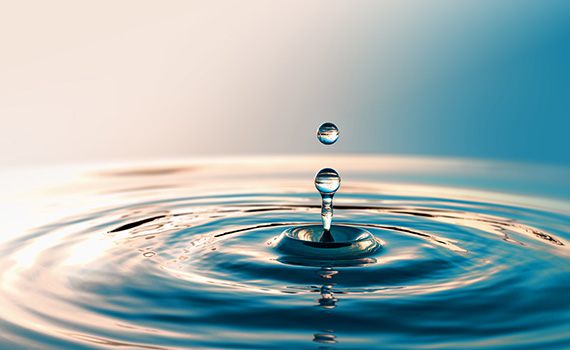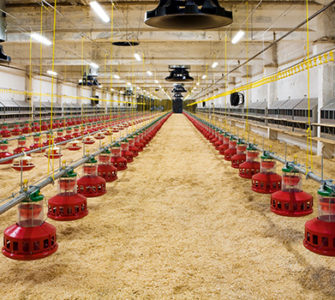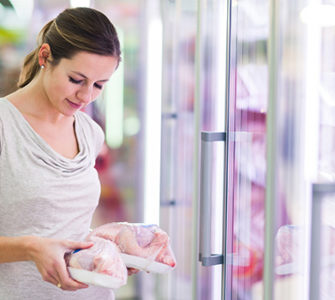NAE production uncovers water quality challenges
By Tom Tabler, PhD
Extension Professor
Mississippi State University Extension Service, Poultry Science Department
Mississippi State, Mississippi
I rarely get on a soap box, but I’m going to make an exception in this case. As an industry, if we’re going to continue with “no antibiotics ever” (NAE) production, we have to know the quality of water our flocks are drinking. We can no longer assume that just because we have water, it’s good, safe water that’s fit for chickens to drink. NAE production is tough enough to manage even when all is going right. If you have water issues — minerals, a bacterial load or the pH is off — it’s even tougher. We need to KNOW what’s in it and whether we need to clean it up or not.
Health issues in our flocks indicate something is wrong. If there’s gut sloughing, loose droppings, wet litter, feed passage, poor growth rates, high feed conversions and increased mortality, there’s no doubt something is wrong! If on-farm management practices are good but flock performance is bad, where do you suppose the problem is? Have you considered the water?
I can’t count the number of NAE growers that over the past 2 years have told me that “it can’t be my water. I’m using the same well and same water supply I’ve always used.” While that may be true, there’s a big difference. All those previous flocks used to get a little antibiotic help at the hatchery and in the feed. And that little bit of help went a long way in masking a host of problems, including poor water quality.
Mask is off
However, in today’s NAE environment, the mask is off, and yet we seem to be looking anywhere and everywhere besides the water source for answers. I’m going to give one example and try to convince you to look at your water if you are having health issues with NAE production. This is just one case of many that I’m working on right now, but it illustrates the complexity of the problem, which pretty much goes unnoticed until things go south.
In February, I got a call from an NAE grower that was losing flock performance. After chatting with him on the phone about where his farm is located, the depth of his wells and the problems he’s encountering, I already knew one thing. The pH of his water was going to be low because I have about 30 samples from that same general area with similar well depths that are likely all pulling from the same aquifer.
Personally, I consider the sweet spot on pH for poultry drinking water to be around 6.2 to 6.8 (or just slightly on the acidic side) but I am aware of veterinarians who have achieved good performance with a pH of 4. However, all aquifers are different and it’s important for growers to also measure pH in the drinker lines. (Simple swimming pool test strips will give a fairly accurate pH reading). Every case is unique and must be addressed accordingly. It’s not a one size fits all situation.
Back to the case at hand: I drove to the farm armed with vials to collect water samples for a mineral/pH analysis. A mineral/pH analysis is quite inexpensive, folks. The University of Arkansas will run a full mineral profile (23 minerals) and the pH for just $20. For what that analysis tells you and all you can learn from it, the price isn’t even a drop in the bucket. Mineral samples do not need special handling, require no overnight shipping and they don’t have to be kept on ice like bacterial samples. You just ship them to the lab, and in a couple of weeks you have your results.
The results came back. There were basically no minerals in the water. Many were not detected at all, and the rest were well below numbers that would cause concern. However, this particular grower has two wells. The pH of one was 2.87 and the pH of the other was 2.94. In all of my years of Extension work, I’ve never seen numbers below 3.0 before.
Temporary improvement
Fast forward. The grower installed a soda-ash injector to get the pH up. He called me about a month ago and said he grew a flock of birds with the soda-ash injector and the flock did much better. However, he also told me that his two wells are tied together and that one went down, and for most of the flock, the birds were only drinking out of one well. He repaired the nonfunctioning well and birds were then drinking from both wells again, but the current flock was performing poorly again, demonstrated by feed passage, gut sloughing, loose droppings, wet litter, etc. He told me he got a bacterial test kit from the University of Arkansas, and I told him how to collect the samples.
Fast forward again. I’m looking at the bacterial analysis as I’m writing this. An acceptable swab sample aerobic plate count for oxygen-loving bacteria is <11,000 CFU/ml (colony forming units of bacteria per milliliter). An unacceptable level is >100,000 CFU/ml. The sample I’m looking at contained 1,730,000 CFU/ml!
Bacteria can make chickens sick. A lot of bacteria can make a lot of chickens sick. High bacteria counts can also affect the taste of the water, which reduces consumption and affects growth rate. This high CFU/ml count likely explains part of the health issues on this farm. However, I wasn’t out of the woods yet because I didn’t exactly know where the problem was. I knew the drinker lines in the house were certainly dirty. However, I didn’t know if the problem was also in the underground lines or perhaps even in one of the wells.
No doubt, a water-sanitation program is a necessity on this farm. And any good water-sanitation program is actually two programs: (1) a set, specific method for cleaning water lines when the houses are empty, and (2) a set, specific method for treating water when birds are on the farm.
Clean versus clean
This is just one example of what we are dealing with in today’s NAE world. A little bit of antibiotic at the hatchery and in the feed might have covered up this problem for a long time, and the grower never even knew it existed. However, NAE production is shining the spotlight on a lot of things we never thought much about before, and water quality is one of them.
We have learned the hard way that “clean” before NAE and “clean” after are two different things. We now understand this means better care of pullets and breeders, cleaner egg packs sent to the hatchery, cleaner hatcheries than before, cleaner trucks delivering baby chicks and better care of broilers. However, it seems we fail to understand that better care of broilers also means a safe, clean drinking-water supply.
I’ll reiterate that water samples are fairly inexpensive. A full mineral analysis and pH is $20 per sample. A bacterial sample kit that includes a Styrofoam cooler, six swabs, eight whirl-pack bags, one ice pack, sampling/submission information and the necessary items for taking and shipping the samples is $35. Drip, swab, or drip/swab combo tests for bacteria, yeast, mold and Escherichia coli range from $9 to $39 each, depending on the test. This is pretty inexpensive insurance to know your chickens are drinking safe water.
We must focus more attention on poultry drinking-water quality if we expect to raise healthy flocks in today’s NAE production environment. Water is the most important nutrient your birds consume. They will consume roughly twice as much water as feed. We can’t expect to grow healthy birds with dirty water.
At some point, we must start widespread farm water sampling to figure out what’s going on in the field. We no longer have the option of medicating our way around poor water quality. Every grower and integrator should ask themselves this question: “Am I willing to drink the water my chickens are drinking?” If your answer is no, you’ve got work to do. If we don’t get a handle on poultry drinking-water quality, and soon — to KNOW what our birds are actually drinking — NAE production is going to be a tough row to hoe for a long, long time.
Editor’s note: The opinions and advice presented in this article belong to the author and, as such, are presented here as points of view, not specific recommendations by Poultry Health Today.
Posted on August 13, 2020

















